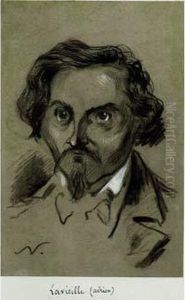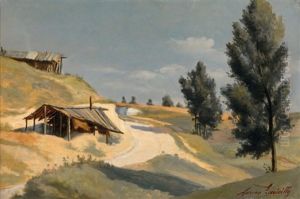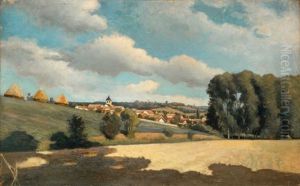Adrien Lavieille Paintings
Adrien Lavieille was a French painter, born in Paris in 1848, into an artistic family. His father, Eugène Lavieille, was a noted landscape painter, providing Adrien with an environment filled with artistic influence and encouragement from an early age. Adrien's training and development as an artist were thus deeply intertwined with the traditions and practices of landscape painting that were prevalent in France during the mid to late 19th century. He pursued his artistic education under the guidance of his father and also studied at the École des Beaux-Arts in Paris, which was a pivotal institution for many artists of his generation.
Lavieille's body of work primarily consists of landscapes, cityscapes, and interior scenes, reflecting a diverse range of subjects and a deep sensitivity to the nuances of light and color. His style was influenced by the Barbizon school, known for its naturalistic approach to landscape painting and an emphasis on capturing the transient effects of light. However, Lavieille also incorporated elements of Impressionism into his work, especially evident in his brushwork and his vibrant use of color. This blend of influences allowed him to create works that were both grounded in traditional techniques and responsive to the evolving tastes of the art world.
Throughout his career, Lavieille exhibited his works in various salons and galleries, gaining recognition and respect among his peers. Despite the changing artistic trends of his time, he remained committed to his personal style and continued to explore the themes and subjects that fascinated him. His paintings, characterized by their detailed execution and the evocative atmospheres they captured, were well-received and collected by art enthusiasts of the period.
Adrien Lavieille's contribution to French art is notable for his dedication to landscape and genre painting at a time when the art world was rapidly changing. His works provide a valuable insight into the transitional period between traditional landscape painting and the more experimental approaches of the late 19th and early 20th centuries. Lavieille passed away in 1920, leaving behind a legacy that, while perhaps not as widely recognized as some of his contemporaries, remains appreciated by those who value the depth and sincerity of his artistic vision.


